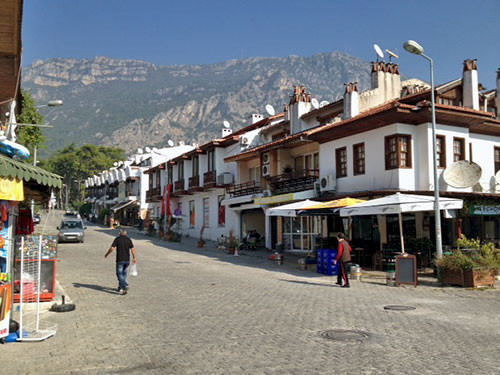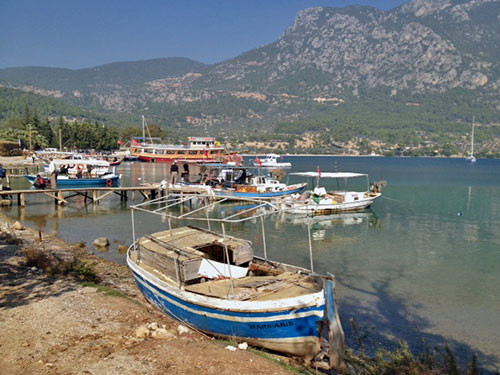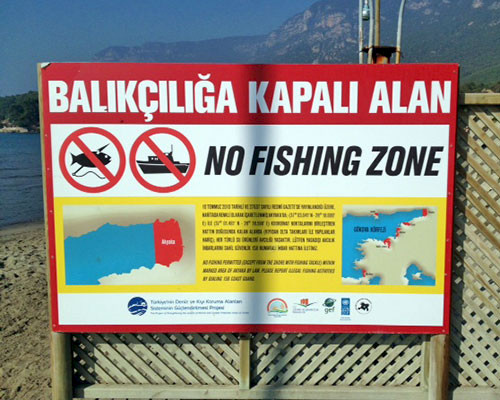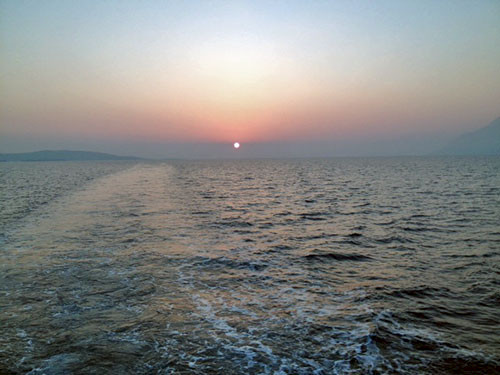Aegean Sea field trip: Egyptian sand, seagrass, marine sanctuaries, cruising
Bill Dennison ·We drove from our Marmarsis hotel on the south side of the Marmasis peninsula fronting the Mediterranean Sea to Akyaka, over to the north side of the Marmasis peninsula to fronting the Aegean Sea. Akyaka was a cute little seaside village. The most striking thing that I noticed on the drive was the abundance of solar hot water heaters on the roofs of the houses. It seemed that almost every house had solar hot water panels, and there were also some photovoltaic units as well. The rugged, rocky landscape was covered with pine trees and my geologist colleague Homii Khoshravan pointed out the limestone formations, iron oxide layers and some bits of igneous rock as well. The other marked cultural feature was the minarets (pointy towers) associated with the domed mosques.

We boarded a tour boat and encamped on the upper decks on comfortable lawn chairs, and proceeded to slowly cruise the coastline. We followed the north shore of the Gokova Gulf until we reached a small cove where we disembarked to have a walk around the fishing village. We saw sea urchins, fish and octopus in the nearshore water. The fishing boats and nets were moored stern in with an anchor line offshore to allow many boats to have access to the small piers.

We were taken via boat to a marine protected area created to protect the spawning site of sandbar sharks. It was off season for the sharks, but our hosts were proud of their marine conservation measures and wanted to show us the marine protected area. Since IAN has been involved in helping Conservation International and WWF communicate the value of Marine Protected Areas, it was nice to actually see one.

The next stop was an anchorage in a secluded cove where freshly cooked fish was served for lunch. Our final stop was the highlight of the trip. We went to Sedir Island, which is named for the Sedir (cedar) trees. A boardwalk took us to Cleopatra Beach, which has an interesting story or theory as to its origin. Cleopatra sailed from Egypt with her Roman lover Marc Anthony to this region of present day Turkey. The fine white sand that has collected on this small Sedir Island beach allegedly has the characteristics of sand from the Nile River delta. Sand may have been used as ballast on the transport ships and collected in Egypt and discarded in Turkey. The other feature touted about this sand is that it is formed by small droplets of limestone that can ignite when exposed to fire. Regardless of the features of this beach sand, the regulations protecting this sand are impressive. No beach towels, no walking on the beach with footwear or wet feet, in short, nothing that would potentially remove the sand was allowed.
The other interesting feature on the island included some ruins of the ancient city of Kedrai (the name of the cedar tree) including a large amphitheater that supposedly held 2500 people (small, friendly people by my count). Ruins of an agora (marketplace) were also visible. It was amazing to reflect on the extended human history that is still visible in this part of the world.

I was able to do a bit of snorkeling and found some Zostera noltii - the same genus of seagrass that I studied for my MS research in Alaska, my PhD research in Cape Cod and my students studied in Australia. This genus certainly gets around. There were rock outcrops that were formed from conglomerates (rocks lithified into a sedimentary layer) with variable erosion rates. There was lots of evidence of gastropods (snails), with tracks in the sand, burrowing holes and egg cases. There were also many small fish that preferred to nibble on Homii's legs for some reason. The water was clear and relatively warm. We also frolicked about the boat, jumping off the upper deck and sliding down a water slide that extended from the bow to the stern.
We had a good sized Maryland contingent aboard: Bob and May Summers, Wayne and Joyce Bell, Lee and Stephanie Currey. We also had Japanese, European and many other nationalities aboard. We were treated to a gorgeous sunset on the trip back to Akyaka. I love field trips with scientific colleagues to see new ecosystems and this was one of those golden days.

About the author
Bill Dennison

Dr. Bill Dennison is a Professor of Marine Science and Vice President for Science Application at the University of Maryland Center for Environmental Science.

